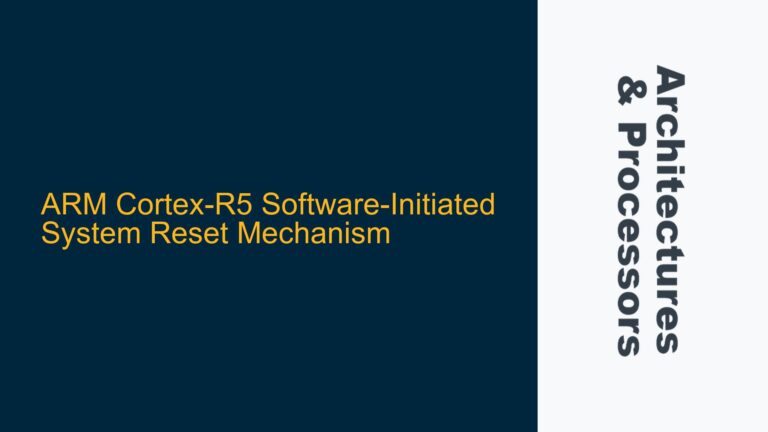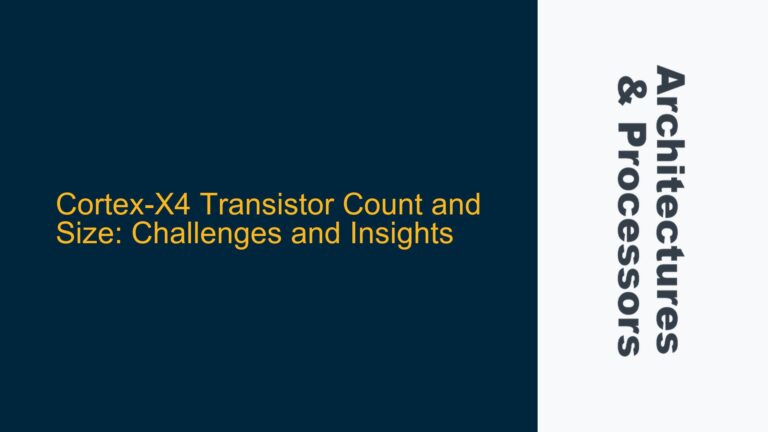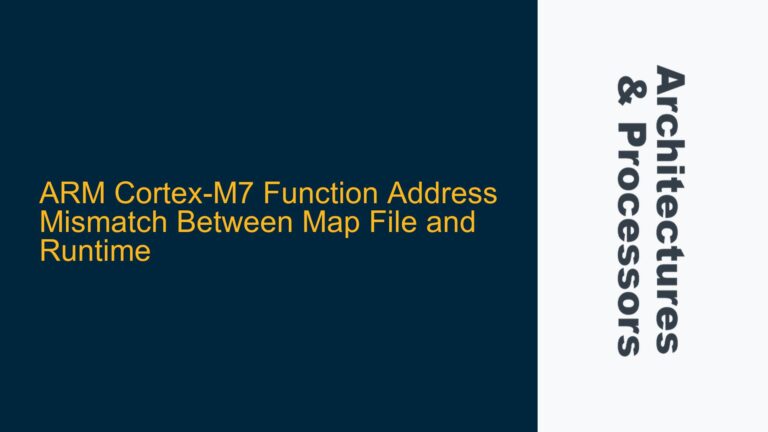ARM Cortex-A FFT Library Selection and Performance Optimization Challenges
The Fast Fourier Transform (FFT) is a cornerstone algorithm in digital signal processing (DSP), widely used in applications ranging from audio processing to wireless communications. On ARM Cortex-A processors, particularly in mobile and embedded systems, selecting the right FFT library is critical for achieving optimal performance while balancing resource constraints. The challenge lies in navigating the trade-offs between performance, memory footprint, and ease of integration, especially when considering the availability of ARM-optimized libraries like NE10, CMSIS, and ARM Performance Libraries, as well as third-party options such as FFTW and PocketFFT.
ARM Cortex-A processors, especially those supporting ARMv8 64-bit architectures, offer advanced features like NEON SIMD (Single Instruction, Multiple Data) instructions, which can significantly accelerate FFT computations. However, leveraging these features requires libraries that are not only optimized for ARM architectures but also tailored to the specific use case, whether it be high-performance computing or resource-constrained embedded systems. The deprecation of older libraries like NE10 and CMSIS for Cortex-A further complicates the decision-making process, as developers must now evaluate newer alternatives and their suitability for their applications.
The core issue revolves around identifying the most efficient FFT library for ARM Cortex-A processors, considering factors such as computational performance, memory usage, and compatibility with modern ARM architectures. This involves understanding the strengths and limitations of each library, as well as the implications of using closed-source versus open-source solutions. Additionally, developers must consider the long-term maintainability and flexibility of their chosen library, as well as its ability to adapt to future ARM architectures and evolving application requirements.
Deprecation of NE10 and CMSIS, and the Rise of ARM Performance Libraries and PocketFFT
The deprecation of NE10 and CMSIS for ARM Cortex-A processors marks a significant shift in the landscape of ARM-optimized FFT libraries. NE10, once a popular choice for ARM-based DSP, has been largely phased out in favor of more modern libraries that better leverage the capabilities of ARMv8 architectures. Similarly, CMSIS, while still relevant for Cortex-M microcontrollers, is no longer the go-to solution for Cortex-A processors. This deprecation has created a gap that is being filled by newer libraries like ARM Performance Libraries and third-party options such as PocketFFT.
ARM Performance Libraries offer a comprehensive suite of optimized mathematical functions, including FFT, tailored for ARM architectures. These libraries are designed to maximize performance on ARMv8 64-bit processors, with support for advanced features like NEON SIMD and multi-threading. However, they come with certain limitations, such as restricted availability on specific platforms and the use of closed-source binaries, which can be a concern for developers seeking transparency and flexibility in their software stack.
On the other hand, PocketFFT has emerged as a lightweight alternative that trades some performance for reduced memory footprint and ease of integration. Despite being less bulky than FFTW, PocketFFT still offers competitive performance, especially on ARM architectures with NEON support. Its open-source nature and active development community make it an attractive option for developers who prioritize flexibility and long-term maintainability over raw computational speed.
The choice between ARM Performance Libraries and PocketFFT ultimately depends on the specific requirements of the application. For high-performance computing tasks where maximum throughput is critical, ARM Performance Libraries may be the preferred choice. However, for embedded systems with stringent memory and power constraints, PocketFFT offers a more balanced solution that still delivers acceptable performance without sacrificing resource efficiency.
Evaluating and Implementing FFT Libraries on ARM Cortex-A: Best Practices and Optimization Strategies
When evaluating and implementing FFT libraries on ARM Cortex-A processors, developers must consider several key factors to ensure optimal performance and resource utilization. The first step is to thoroughly benchmark the available libraries on the target hardware, using representative workloads that reflect the intended use case. This involves measuring not only the raw computational speed but also the memory usage, power consumption, and scalability across different input sizes and processor configurations.
For ARM Performance Libraries, developers should ensure that the target platform is supported and that the library is properly configured to leverage advanced features like NEON SIMD and multi-threading. This may involve fine-tuning compiler flags, enabling specific optimizations, and ensuring that the library is linked correctly with the application. Additionally, developers should be aware of the potential limitations of using closed-source binaries, such as reduced flexibility in debugging and customization.
For PocketFFT, the focus should be on minimizing memory footprint and ensuring compatibility with the target ARM architecture. This may involve optimizing the library for specific NEON instructions, reducing unnecessary dependencies, and integrating the library seamlessly with the application’s build system. Developers should also consider the long-term maintainability of the library, including the availability of updates and community support.
In addition to selecting the right library, developers should also consider implementing additional optimizations to further enhance FFT performance on ARM Cortex-A processors. This may include techniques such as loop unrolling, data alignment, and cache optimization, as well as leveraging hardware features like DMA (Direct Memory Access) to offload data transfers and reduce CPU overhead. Furthermore, developers should explore the use of profiling tools to identify and address performance bottlenecks, ensuring that the FFT implementation is fully optimized for the target hardware.
Ultimately, the successful implementation of FFT on ARM Cortex-A processors requires a holistic approach that balances performance, resource utilization, and long-term maintainability. By carefully evaluating the available libraries, understanding their strengths and limitations, and applying best practices in optimization, developers can achieve the best possible performance for their specific application, whether it be in high-performance computing or resource-constrained embedded systems.
Conclusion
The selection and optimization of FFT libraries for ARM Cortex-A processors is a complex but critical task that requires a deep understanding of both the hardware and software landscape. With the deprecation of older libraries like NE10 and CMSIS, developers must now navigate a new ecosystem of ARM Performance Libraries and third-party options like PocketFFT. By carefully evaluating the trade-offs between performance, memory footprint, and ease of integration, and by applying best practices in optimization, developers can ensure that their FFT implementations are fully optimized for the target ARM architecture, delivering the best possible performance for their specific application.






